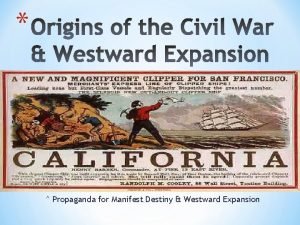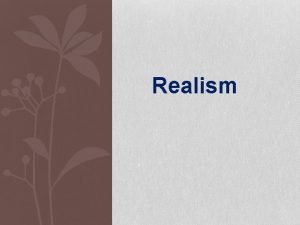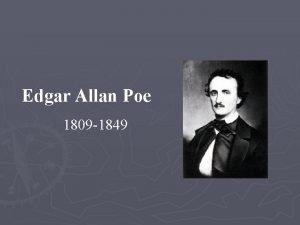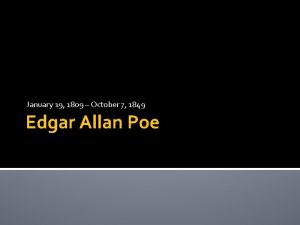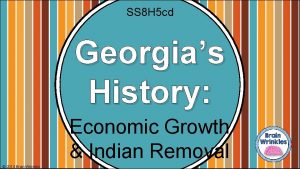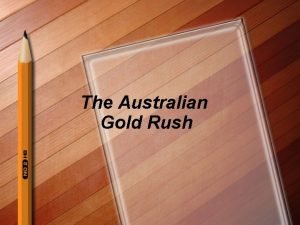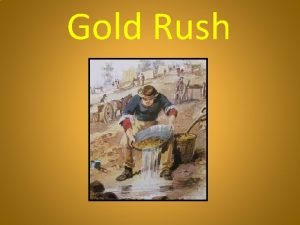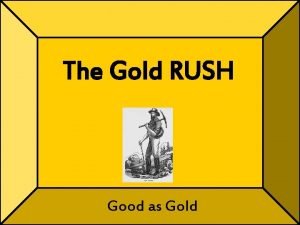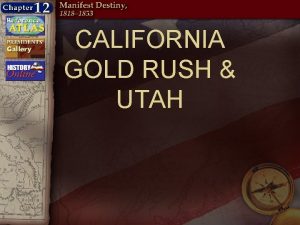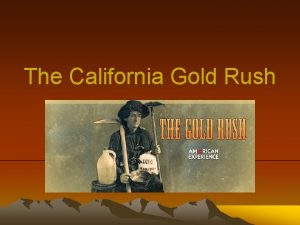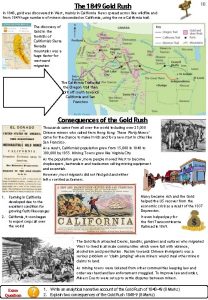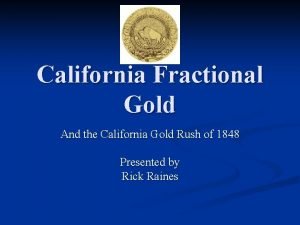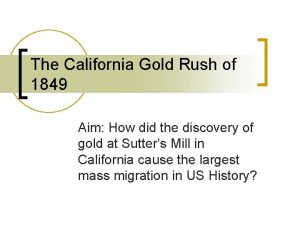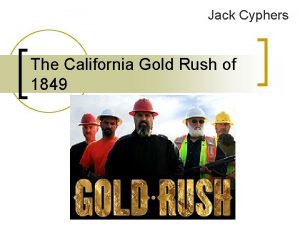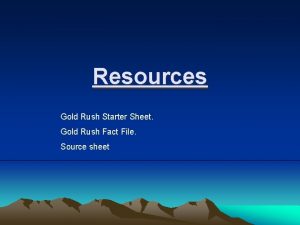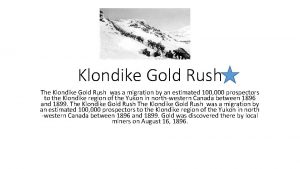California Gold Rush In 1849 gold seekers known











- Slides: 11

California Gold Rush In 1849 gold seekers, known as Forty-Niners, came to California from every part of the United States and from all over the world. The search for gold was concentrated on the Mother Lode country, in the western foothills of the Sierra Nevada. California’s population now rose to more than 90, 000 by the end of 1849 and to 220, 000 by 1852, the year in which gold production reached its peak. In the next two years, the gold rush ended almost as quickly as it began. Gold mining became a fairly stable and more organized enterprise. Most prospectors either became farmers, merchants, or left the state, as large mining companies took their place.

Steamboat, steam-driven vessel, in common use during the 19 th and early 20 th centuries to carry passengers and goods across bodies of water – Mississippi River

Steam Locomotive • With Westward Expansion, the steam locomotive was able to bring more people out West. • Once established, locomotives were the primary way of transportation until the 1940’s.

Telegraph • Telegraph, system of communication employing electrical means to transmit and receive signals with a code of electrical pulses (Morse Code). • This was the primary source of communication during the Westward Expansion.

Abolitionist Movement • The reform movement during the 18 th and 19 th centuries. Often called the antislavery movement, it sought to end the enslavement of Africans and people of African descent in Europe, the Americas, and Africa itself. No Slavery!!!!

Harriet Tubman • Formerly a slave in the American South, Harriet Tubman became known as the most famous guide of the Underground Railroad • Was part of the Abolitionist Movement

Women’s Suffrage Movement • Right of women to share on equal terms with men the political privileges afforded by representative government and, more particularly, to vote in elections and to hold public office.

Elizabeth Cady Stanton • Elizabeth Cady Stanton, along with Lucretia C. Mott and Susan B. Anthony, was an early leader of the women’s rights movement. She and Anthony founded the National Woman Suffrage Association. Stanton served as its president until 1890. She persuaded Senator Aaron A. Sargent of California to sponsor a woman suffrage amendment to the U. S. Constitution in 1878. The amendment was reintroduced every year until Congress finally approved it in 1919, allowing women the right to vote.

Elizabeth Cady Stanton

Sojourner Truth • Sojourner Truth was a former slave who became a preacher, abolitionist, and supporter of women's rights. She made her famous speech “Ain't I a Woman? ” (retold here by Frances D. Gage) at a convention on women's rights in 1851 in Akron, Ohio. According to Gage, Truth made this speech in response to Protestant ministers’ claims that men deserved greater privileges than women because of their “superior intellect” and because God had chosen Jesus Christ to take the form of a man

“Ain’t I a Woman? ” • “Dat man ober dar say dat womin needs to be helped into carriages, and lifted ober ditches, and to hab de best place everywhar. Nobody eber helps me into carriages, or ober mud -puddles, or gibs me any best place!” And raising herself to her full height, and her voice to a pitch like rolling thunders, she asked 'And a'n't I a woman? Look at me! Look at my arm! (and she bared her right arm to the shoulder, showing her tremendous muscular power). I have ploughed, and planted, and gathered into barns, and no man could head me! And a'n't I a woman? I could work as much and eat as much as a man—when I could get it—and bear de lash a well! And a'n't I a woman? I have borne thirteen chilern, and seen'em mos’ all sold off to slavery, and when I cried out with my mother's grief, none but Jesus heard me! And a'n't I a woman?
